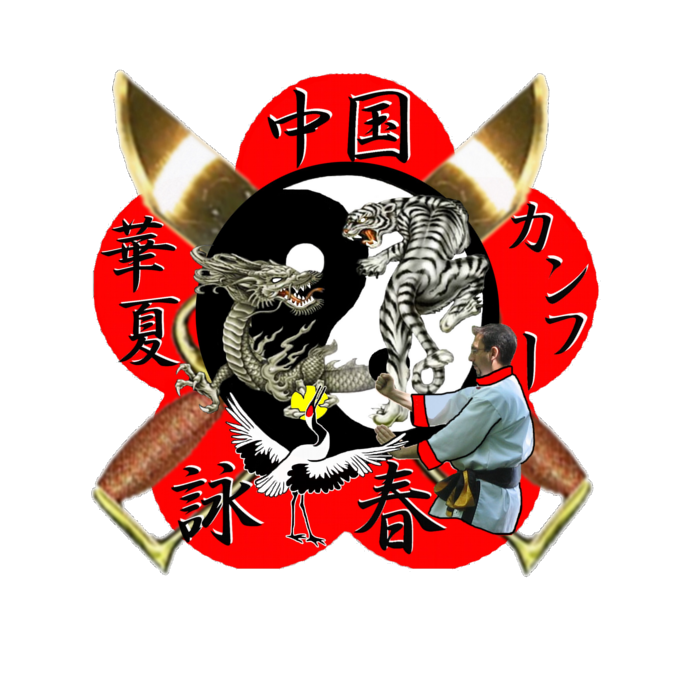The Sil Lim Tao form, is the first form Wing Chun students learn. While the form itself is ‘simple’ when compared to other martial arts systems on the surface, for the Sil Lim Tao to be done correctly, a practitioner must keep several principles in mind. These principles help the Wing Chun practitioner to self-correct, any errors while performing the Sil Nim Tao.
The Sil Lim Tao provides the student an application of the following Wing Chun (Ving Tsun) key theories and principles:
- Centerline
- Facing
- Gates
- Structure Unification
- Stance (Yee Gee Kim Yeung Ma)
- The Tan, Bong & Fook relationship
- Alignments
The Sil Lim Tao provides the Wing Chun practitioner all the core hand techniques or positions in Wing Chun. It can be said that the Sil Lim Tao is the foundation for the entire Wing Chun system. Only with diligent practice and correction will a Wing Chun practitioner be able to move on to the Chum Kil (Searching Bridge) form. If a student moves on to the Chum Kil without a solid understanding of correct concepts and principles found and taught in the Sil Lim Tao form, the journey will take longer. The best analogy of progressing to soon is trying to run before you can truly walk. You will eventually get it, but you will fall a lot more, and take longer to master it.
………………………..
The Wing Chun form of Chum Kil, is the second empty hand form that a Wing Chun practitioner learns. As mentioned above, without a solid understanding and a rudimentory mastery of the Sil Lim Tao, learning and performing the Chum Kil form correctly will be difficult and daunting to the practitioner. The Chum Kiu form now introduces footwork, motion, turning and centralization to the Wing Chun practitioner. When observing the Chum Kiu form, it should be noted that the practitioner is learning to search for a bridge to his or her opponent, and that the core of the Chum Kil form covers defensive tatics in the Wing Chun system.
The Chum Kil form now takes the principles learned in the Sil Lim Tao and applies them dynamically, or in motion. Along with teaching concepts of:
- Centralization
- Balance
- Forward & turning Energy
- Footwork / Stepping
- Che Ma (Turning Horse)
- Kicking
The Third empty hand form in the Wing Chun system is the Biu Tze or ‘Thrusting Fingers’ form. As with all the other Wing Chun forms, without a solid understanding and good building blocks made and set by the Sil Lim Tao and Chum Kiu form, the Biu Jee form will only cause confusion and frustration to the Wing Chun student.
The Bil Tze form has also been called the ‘Emergency Form’ for when your centerline has been compromised. This has been a form, in years passed, been considered ‘secret’ and trained only by cover of night or behind closed doors.
The Bil Jee form stresses above all, the returning to center, and the application of short range power and generation, and use of elbows, gaun sau and bil sau. It can be seen that the Biu Tze form is purely offensive in both tatics and technique.
It should be said that because the Wing Chun forms (especially when compared to other systems of martial arts) are short, direct, and unflowery, one could learn all the Wing Chun (Ving Tsun) empty hand techniques in months, but to truly master and understand them fully can take years of dedication and practice.
………………………………
According to Wing Chun legend, the Wing Chun Mok Yun Jong or Wooden Dummy was based on the legendary 108 Wooden Men in the Shaolin Temple. Each of one of the 108 Wooden Men taught a specific technique. After the destruction of the temple by the Manchus, Nun Ng Mui created a single Mook Yun Jong (Wooden Dummy) in memory of 108 Wooden Men at the Shaolin Temple. The wooden dummy we have today was based on specifications set by Yip Man.
The wooden dummy is a critical part of the Wing Chun (Ving Tsun) system. So much, that it can be considered the ‘symbol’ most closely associated with the Chinese martial art of Wing Chun. The ‘Mok Jong’ is the incorporation of the three empty hand forms (Sil Nim Tao, Chum Kiu & Bil Tze) along with introducing techniques found only in the Dummy Set.
Many of the Wing Chun families believe that the Wooden Dummy is for conditioning the arms, and as such they turn the Mok Yun Jong into a striking tool. In the Moy Yat – Nelson Chan line, we believe that ‘the Jong’ is not meant for toughening the arms, but that conditioning of the arms is just a byproduct of training. at the Neworld Martial Arts Centre. This form will teach the student that through the use of the Wooden Dummy a student will learn:
- Proper Footwork
- Proper angles
- Proper power focus
- Proper alignments & structure
- Proper facing
- Technique Flowing
- Sticking
…………………………
The Luk Dim Boon Kwan (6 1/2 point pole) form uses a long tapered pole, known as the ‘sue mai kwan’ or ‘rat’s tail pole’. Traditionally the pole was approximately 12 feet long. Today, the average sue mai kwan is 8 to 10 feet long.
Like the rest of the Wing Chun system, the Luk Dim Poon Kwan form is free of fancy movements. The objectives of the luk dim Poon Kwan form is to help teach the student use of a long weapon, but more importantly, it helps to develop power, balance, and point energy.
………………………
The Pat Chum Doa is considered the pinacle of the Wing Chun system. Very few people ever persist in the Wing Chun system to reach this level. The Doa form is more than the final form in Wing Chun system, it is a sign of a student’s relationship with his Sifu.
The Pat Cham Doa helps to train the coordination of two hands, the eyes, the wrists and the footwork.

